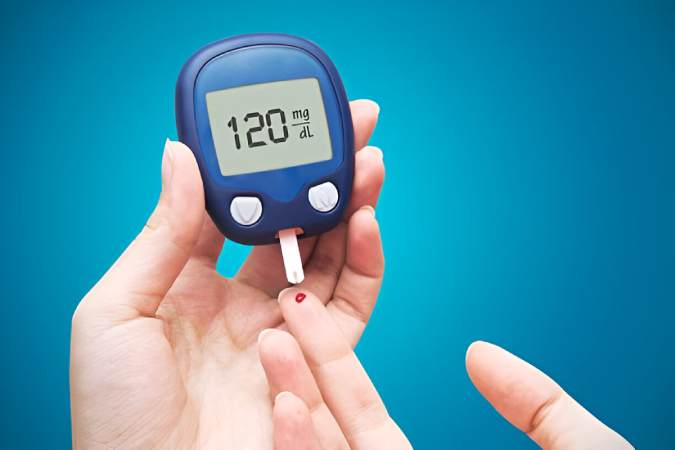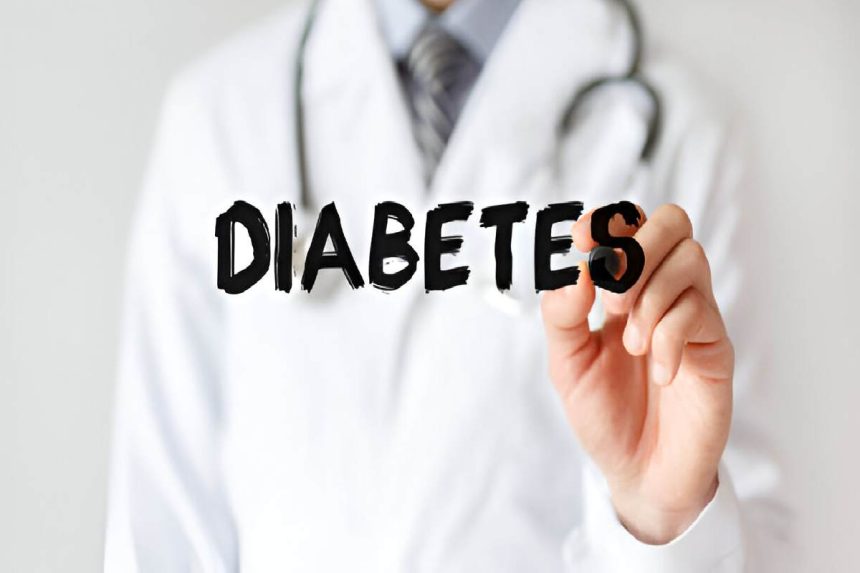Diabetes Mellitus
Hi, we want to talk with you about blood sugar and how it can affect your health. The amount of blood sugar in your body can show a lot about how healthy you are. It can also help you know how your body is handling diabetes.
People with diabetes mellitus manage it in different ways. Some people start by changing what they eat. A lot of people add some exercise to their day too. This can help them feel better. It also helps keep their blood sugar at a good level. Other people use pills to keep their blood sugar steady. A few people need to use insulin to take care of their blood sugar.
All these ways help the body keep blood sugar at a good level. When blood sugar stays steady, he may not have the problems that come with diabetes mellitus.
Hi, today we will talk about blood sugar. It is good to know how blood sugar can change your health. The level of blood sugar in the body can show many things. It tells you what is going on inside. It shows if you can have control of diabetes. If you learn about blood sugar, you may feel better. You can take care of your health in a good way.
For people who have diabetes mellitus, there are ways to keep your blood sugar in check. One way is to make lifestyle changes in your daily routine. You can get exercise and be active each day. A healthy diet is also important, so you should eat food that is good for you. If you make these simple changes, it can help you feel better.
Some people need to use medicine. This can be insulin or pills for diabetes. The type of diabetes you have is important. How strong the diabetes is will help your doctor decide which medicine you get. The medicine they pick will be the one that works best for your body. Their choice will also depend on what you need.
Blood sugar is the amount of blood glucose in your body. When you eat, your blood glucose will go up. You can see this change in about one hour. After that, it will slowly go down with time. If blood sugar stays high, it can mean you have insulin resistance. For some people, it may mean their diabetes mellitus is not under control.
If you know how to check your blood sugar, you may feel more calm. When you read what the numbers mean, it can help you see that living with diabetes can still be good.
There are a few types of diabetes. There is type 1 diabetes, where the body does not make insulin. Type 2 diabetes happens because of insulin resistance. In this type, the body does not use insulin like it should. Later, it can make less insulin over time. Gestational diabetes can appear in women while they are pregnant. All these types of diabetes affect how blood glucose moves around in the body.
High blood glucose happens when your diabetes or insulin resistance is not kept in check. If you keep an eye on your blood glucose, you can know what steps to take next. This will help you feel better. It also helps you live a good and healthy life.
The body gets energy from the food you eat. Insulin helps the body use sugar as energy. It also keeps some sugar, so you can use it later when you need it. There are a few things that can make your blood sugar go up.
Large meals
So, taking foods and drinks that are rich in sugar
When you eat processed food, you get a lot of simple carbohydrates. The last thing you had to eat is important. We need to know what it was so we can find out how much you took in. This helps us see the real amount that went into your body.
Insulin is made and used by the human body.
Table of Contents
Blood Glucose Testing
 You can check your fasting blood glucose in two ways. One way is to use a blood glucose test. The other way is to get a glycosylated hemoglobin test. Both of these tests show the level of blood glucose or blood sugar in your body.
You can check your fasting blood glucose in two ways. One way is to use a blood glucose test. The other way is to get a glycosylated hemoglobin test. Both of these tests show the level of blood glucose or blood sugar in your body.
The Fasting Blood Sugar Test is one type of diabetes test.
A fasting blood glucose test checks the amount of sugar in your blood. To get the best result, do the blood test in the morning before you eat breakfast. Be sure not to eat or drink anything except water for eight to ten hours before you do the blood test. If your fasting blood glucose is one hundred twenty mg/dl or higher, you may have diabetes mellitus.
The fasting blood glucose test, the blood sugar check, and the blood test are important for your health. They let you and your doctor see if your blood glucose or fasting blood glucose levels are too high or too low. A blood test gives the doctor clear details about what is happening inside you. These tests are a good way to look at and take care of your health.
The blood sugar you test two hours after you eat is called post-prandial blood sugar. Many people say PPBS for this.
The post-prandial blood sugar test tells you your blood sugar level two hours after you eat. If it goes over 200mg/dl at this time, there be a chance that you have diabetes mellitus.
Random Blood Sugar Test (RBS)
A random blood glucose test can check your blood sugar at any time of the day. You do not have to wait or plan for a certain time to get it done. This test shows what your blood sugar is right then. Many people get this test if they feel their blood sugar could be too high. It helps you and your doctor find out if you are at risk of diabetes.
If your blood sugar is between 160 and 200 mg/dl or even higher, a doctor might say that you have diabetes mellitus. When you get this, some things happen to your body. You can feel very thirsty. You may need to go to the bathroom more often. A person can lose weight even if they do not try. You will feel tired all the time. Sometimes, your vision can get blurry too.
If you see these signs and you find that your blood sugar is high, it is good to talk to your doctor soon. The doctor will check you and let you know what to do next. A doctor can help you find the best way to take care of your blood sugar.
HbA1C (Glycosylated Hemoglobin)
The HbA1C test lets you know your average blood glucose from the last three months. You do not need to fast before you take this test. This is because the test checks the glucose in your red blood cells. The HbA1C test works well to find out your blood glucose level over the last two or three months. It is an easy way to see what your glucose level has been in your body.
A normal HbA1C level is between 4% and 5.6%. If your HbA1C level is from 5.7% to 6.4%, you could be at risk of diabetes. A level above 6.5% shows that you have diabetes.
Type 1 diabetes is a type of diabetes. It starts when the immune system attacks the cells in the pancreas. These cells make insulin for the body. When the immune system attacks, the body does not have enough insulin. You will often see this type of diabetes in kids or young adults.
Type 2 diabetes is not the same as type 1 diabetes. Most people get type 2 diabetes later in life. In this kind of diabetes, the body is not able to use insulin in the way it should. You may not have enough insulin, but your body still makes some insulin.
Doctors use the HbA1C test to see how your blood glucose has been doing over some time. They look at this to find out if your blood sugar is where it should be. The HbA1C test is good for both types of diabetes.
Target Blood Glucose Levels
Blood glucose level goals are not the same for everyone. Your doctor will help you pick the best goal for your blood glucose. He or she will look at how long you have had diabetes. Your age also matters when choosing your blood glucose level goals. If you have any health problems, your doctor will think about them when keeping track of your blood sugar. Some people feel changes in blood sugar at special times. If you feel these changes, your doctor will want to know. This will help your doctor find the right glucose level goal for you.
The ADA shares good tips to help you set your blood glucose goals. These tips think about how old you are and your health. So, you get goals for your blood glucose level that fit you. Your blood glucose level goals change with you as you move through life.
There are a few types of diabetes. Type 1 diabetes starts because of things in your body that you cannot change. Type 2 diabetes, on the other hand, can slow down if you make some lifestyle changes. The most important thing is to keep an eye on your blood glucose level. This way, you can see how your glucose level goes up or down each day. If you watch your blood glucose, you may feel better over time. It is a good idea to care about the different types of diabetes, try these lifestyle changes, and always notice your blood glucose level.
Moving your body, eating good meals, and checking your blood glucose every day. All these can help your glucose level stay in a good range. Some people may not get diabetes if they do these things. For other people, doing all this could make diabetes show up later.
- The way you handle your diabetes will change, based on how long you have had it.
- Your age is also important.
- There are people who have health problems that can affect their blood glucose.
- A person may not notice if their blood glucose goes up or down.
- The ADA sets blood glucose goals, but these can change as people get older or deal with health problems. The blood glucose goals are strict, but made for each person.
- A person’s HbA1c should stay under 7%.
- Before eating, your blood glucose should be from 80 to 130 mg/dl.
- After you eat, your finger read of blood glucose should be under 180 mg/dl.
How To Manage Diabetes Mellitus
They should have a record book. Every time you have a blood test, write down your blood sugar and the other values that show what you have in your blood. It is good to add some notes about your food, blood sugar numbers, physical activity, and stress in the book. Check your blood sugar numbers often. If your blood sugar gets high or stays low for a few days, look at your diabetes plan. Talk to your diabetic doctor about it. The doctor can help you know what your blood test results say. Your doctor will tell you what you need to change so you feel better and manage diabetes in a good way.
Diabetic neuropathy
Diabetic neuropathy is a health problem that shows up in people who have diabetes. This condition starts when there is high blood sugar inside the body for a long time. The person might feel pain in the feet and legs. There may be numbness, or the feet and legs feel like they are tingling. Many people know these signs as peripheral neuropathy.
Diabetic neuropathy means that there be nerve damage in your body. Sometimes, this nerve damage changes the way your organs work. When this happens, people call it autonomic neuropathy. You will get different signs based on which nerves are hurt.
To take care of diabetic neuropathy, you have to keep your blood sugar at a good level. It is also good to have a healthy life. You should check for treatments that help with nerve damage.
American Diabetes Association
You can find out your chance of getting diabetes by using a risk calculator from the American Diabetes Association. A doctor will check your fasting blood glucose and your hemoglobin A1C. Sometimes, the doctor may use an oral glucose tolerance test or a glucose tolerance test. If your blood glucose numbers are close to normal, your doctor might want to check them more often. You may need to have these tests at least one time every year.
Search Terms
higher risk
gestational diabetes
blood pressure
family history
risk factors
american diabetes association
diabetes association
risk of complications
blood vessels
lifestyle changes
types of diabetes
diabetic retinopathy
diabetic nephropathy
risk of type
high risk
body weight
weight loss
glucose tolerance test
neonatal diabetes
health problems
increased risk
healthy diet
immune system
heart disease
older adults
diagnosis of diabetes






